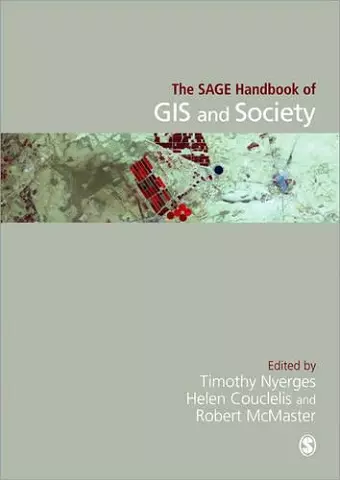The SAGE Handbook of GIS and Society
Robert B McMaster editor Timothy Nyerges editor Helen Couclelis editor
Format:Hardback
Publisher:SAGE Publications Inc
Published:13th Apr '11
Currently unavailable, and unfortunately no date known when it will be back
This hardback is available in another edition too:
- Paperback£35.00(9781446295816)

"The definitive guide to a technology that succeeds or fails depending upon our ability to accommodate societal context and structures. This handbook is lucid, integrative, comprehensive and, above all, prescient in its interpretation of GIS implementation as a societal process."
- Paul Longley, University College London
- Journal of Geographical Analysis
Over the past twenty years research on the evolving relationship between GIS and Society has been expanding into a wide variety of topical areas, becoming in the process an increasingly challenging and multifaceted endeavour. The SAGE Handbook of GIS and Society is a retrospective and prospective overview of GIS and Society research that provides an expansive and critical assessment of work in that field.
Emphasizing the theoretical, methodological and substantive diversity within GIS and Society research, the book highlights the distinctiveness and intellectual coherence of the subject as a field of study, while also examining its resonances with and between key themes, and among disciplines ranging from geography and computer science to sociology, anthropology, and the health and environmental sciences.
Comprising 27 chapters, often with an international focus, the book is organized into six sections:
- Foundations of Geographic Information and Society
- Geographical Information and Modern Life
- Alternative Representations of Geographic Information and Society
- Organizations and Institutions
- Participation and Community Issues
- Value, Fairness, and Privacy
Aimed at academics, researchers, postgraduates, and GIS practitioners, this Handbook will be the basic reference for any inquiry applying GIS to societal issues.
The wide ranging contributions to this very important volume demonstrate how success in using GIS to understand society is intimately linked to society′s understanding of GIS. Tim Nyerges, Helen Couclelis and Bob McMaster have created the definitive guide to a technology that succeeds or fails depending upon our ability to accommodate societal context and structures. This handbook is lucid, integrative, comprehensive and, above all, prescient in its interpretation of GIS implementation as a societal process.
-- Paul LongleyThis is truly a handbook - a book you will want to keep on hand for frequent reference and to which GIS professors should direct students entering our field... Selection of a few of the chapters for individual attention is difficult because each one contributes meaningfully to the overall message of this volume. The SAGE Handbook of GIS and Society is an important collection of articles that will set the tone for the next two decades of discourse and research about GIS and society.
-- Journal of Geographical Analysis
From a broader perspective, the various approaches, topics and applications presented in the book effectively clarify how the spatial dimension helps us to understand social phenomena as a reflection of social relations but also as an integral component of those relations. Its chapters illustrate how geospatial technologies mediate between space and society while shedding light on classic debates conducted in social theory and human geography about the spatial dimension′s role in social processes. I highly recommend this book to students, scholars and the general public.
-- Itzhak OmerThe editors have assembled an admirable set of contributions which demonstrate the use of geospatial technologies in a wide range of application areas and have drawn on these case studies to highlight approaches that should contribute to addressing such concerns and thus help meet such laudable (if ambitious) aspirations.
-- Gary HISBN: 9781412946452
Dimensions: unknown
Weight: 1190g
576 pages